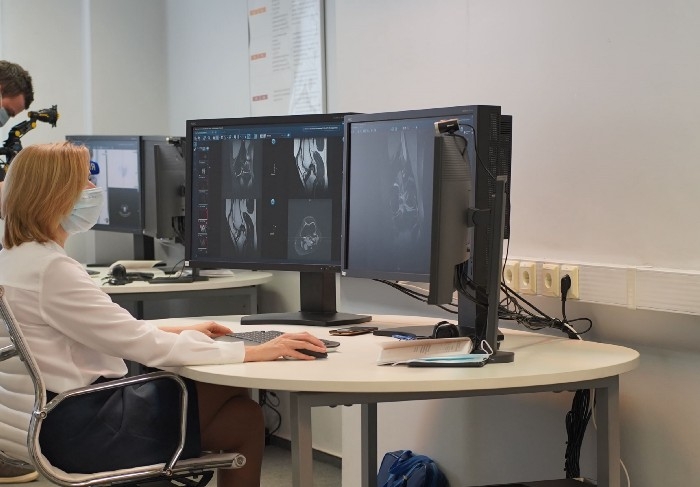Todate, 12 of the 46 Moscow COVID outpatient computed tomography centers (OCTC) have been transferred back to normal operation. Previously, these centers were opened in the city clinics for the examination of people with suspected COVID-19 and flu symptoms. For two months during their operation, 150 thousand people were tested by the COVID outpatient centers. The most significant number of studies were conducted in Mitino. In this area of Moscow, 205 patients were examined daily at OCTCs. According to the director of the Center of Diagnostics and Telemedicine, Professor Sergey Morozov, viral pneumonia was detected in half of the Muscovites referred to CT.
fter a large-scale survey of citizens using computer tomography, twelve of the forty-six COVID centers, which worked in the outpatient clinics of the city, have now been transferred back to normal work. During the outbreak of the pandemic, when the incidence started to increase sharply, outpatient CT centers began to operate 24/7. The need to create such units was due to the fact that doctors did not know how to distinguish patients with coronavirus infection from patients with flu or pneumonia. At the same time, the inhabitants of the city were frightened by the tragic news from Italy and demanded hospitalization at the easiest stage of the disease. Muscovites considered the coronavirus almost a death sentence, and at that time the hospitals were crowded. The health system had to find a way to reduce the burden. One option was the decision to direct those with mild symptoms to be treated at home. Another option was to open OCTCs to determine whether people had COVID-19, as tomography is more effective for establishing U07.2 Covid-19 diagnosis than using Polymerase chain reaction (PCR) tests (U07.1 diagnosis). Also, there was an urgent need to open CT centers because of the average sensitivity of PCR.
Moreover, health workers recognized the risk of missing the disease in the early stages using only PCR tests. The reason the disease went undetected is that the virus descends from the nasopharynx into the lungs. In order to avoid this mistake, at the beginning of April, the task was to quickly deploy a diagnostic network of tomography accessible to citizens. This solution was based on the existing clinics. The opening of CT centers allowed the conducting of the following studies at one place:
- Examinations by general practitioners
- CT scans
- Heart rate measurements
- Pulsoxymetry to determine the oxygen content of blood
- Electrocardiography (ECG) to determine possible contraindications for certain drugs
- Nasal and nasopharyngeal swabs for PCR tests
From the beginning, the network of COVID centers reduced the workload on hospitals by about ten times. CT diagnostic data was automatically transmitted to federal and private medical centers, where patients were hospitalized if necessary. This method was a successfully implemented solution to the problem of overcrowded hospitals. Additionally, doctors began to receive information on how to distinguish the flu from the coronavirus. All of these improvements transformed the centers into specific medical facilities where patients could go if they suspected they had a coronavirus infection. Notably, OCTCs have not increased Covid-19 incidence among healthcare workers.
Center of Diagnostics and Telemedicine
OnJune 11, 2020, the World Health Organization issued recommendations for radiology diagnostics, noting the contribution of CT diagnostics in the detection of COVID-19 infections. Artificial Intelligence (AI) will learn to recognize COVID-19 using a database containing CT examinations of patients’ lungs. According to the CMO of the Center of Diagnostics and Telemedicine, Stanislav Samburskiy, the database was assembled from anonymous sets of patient computed tomograms in Moscow COVID-19 centers.


